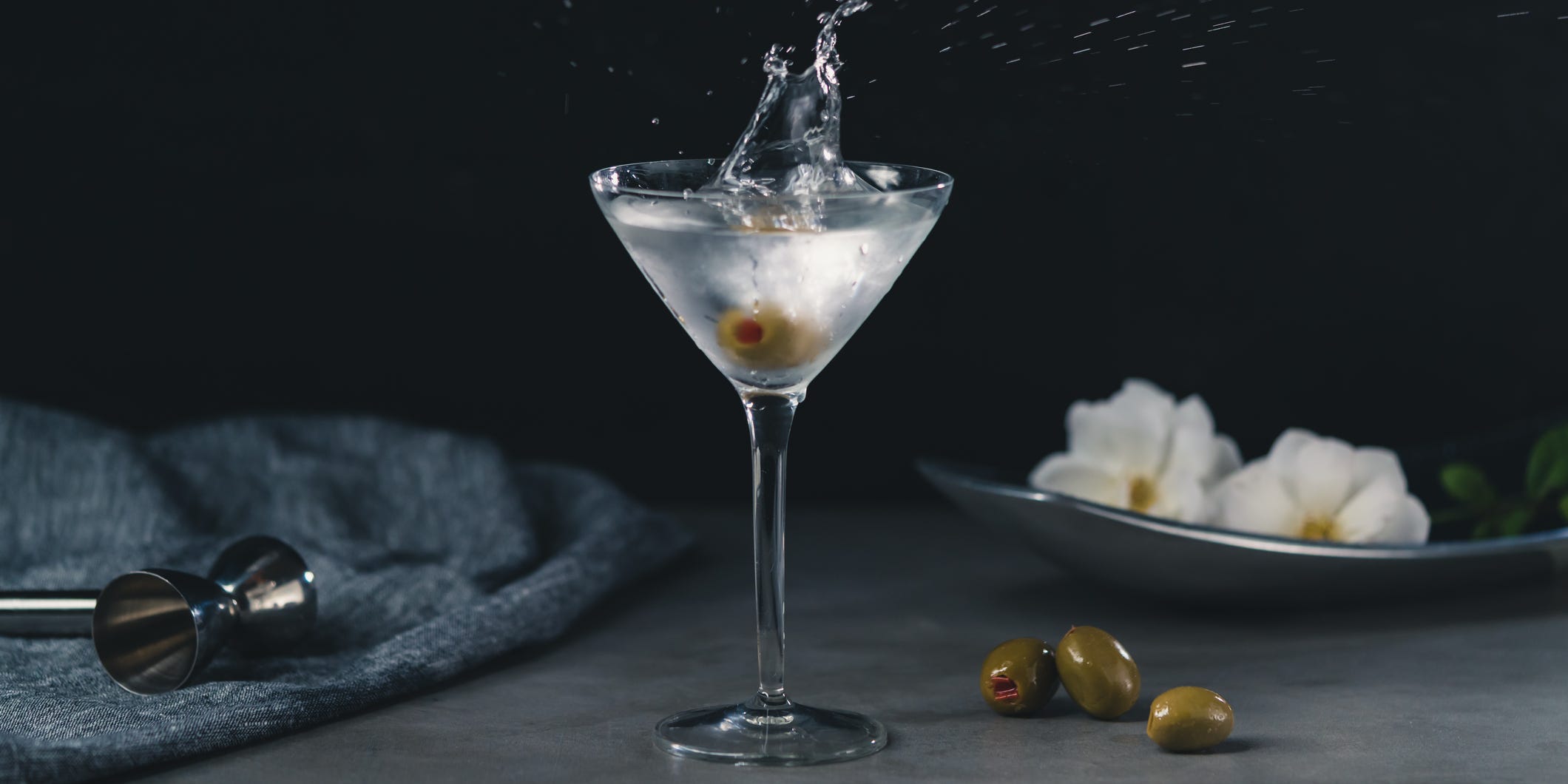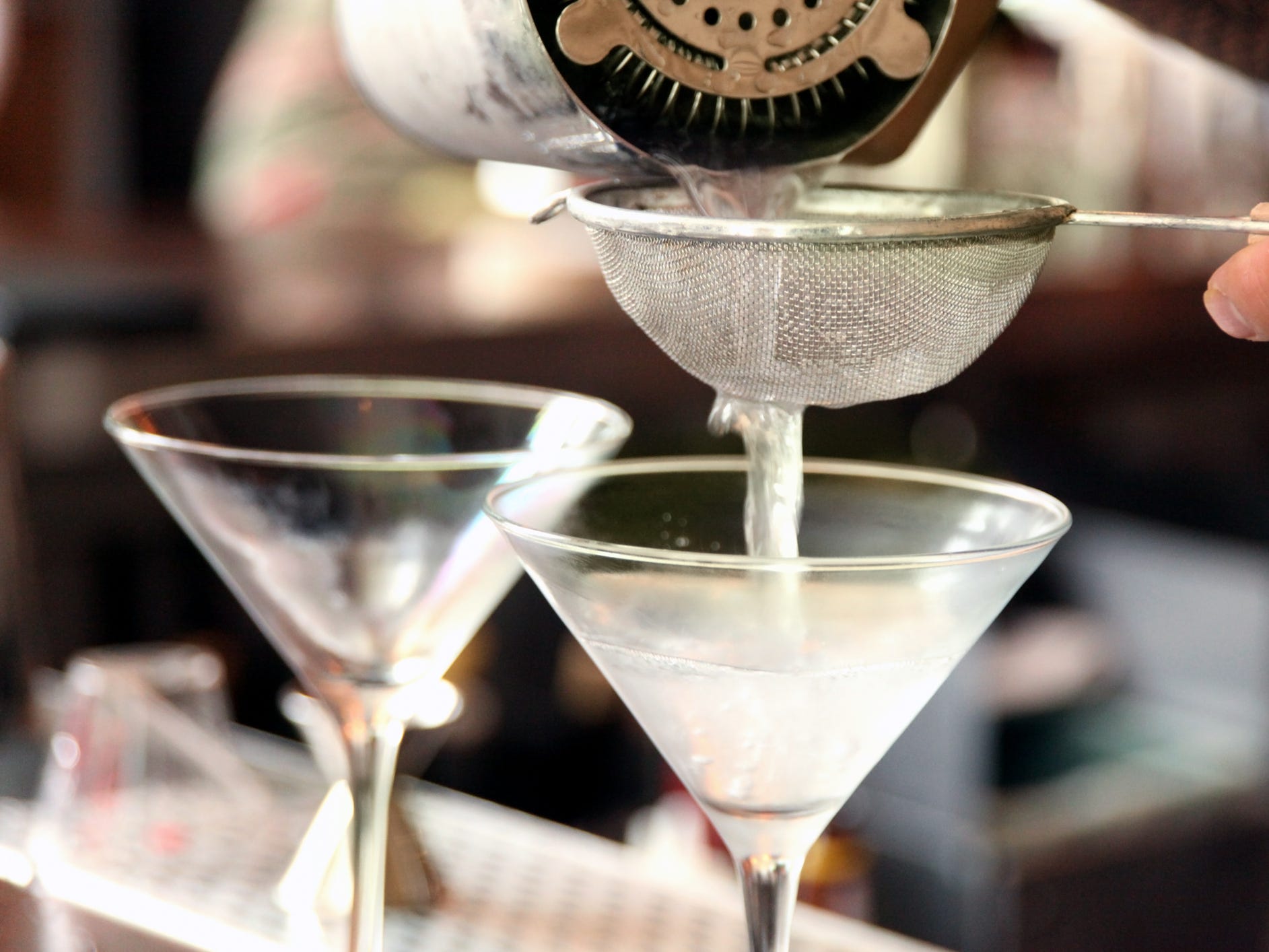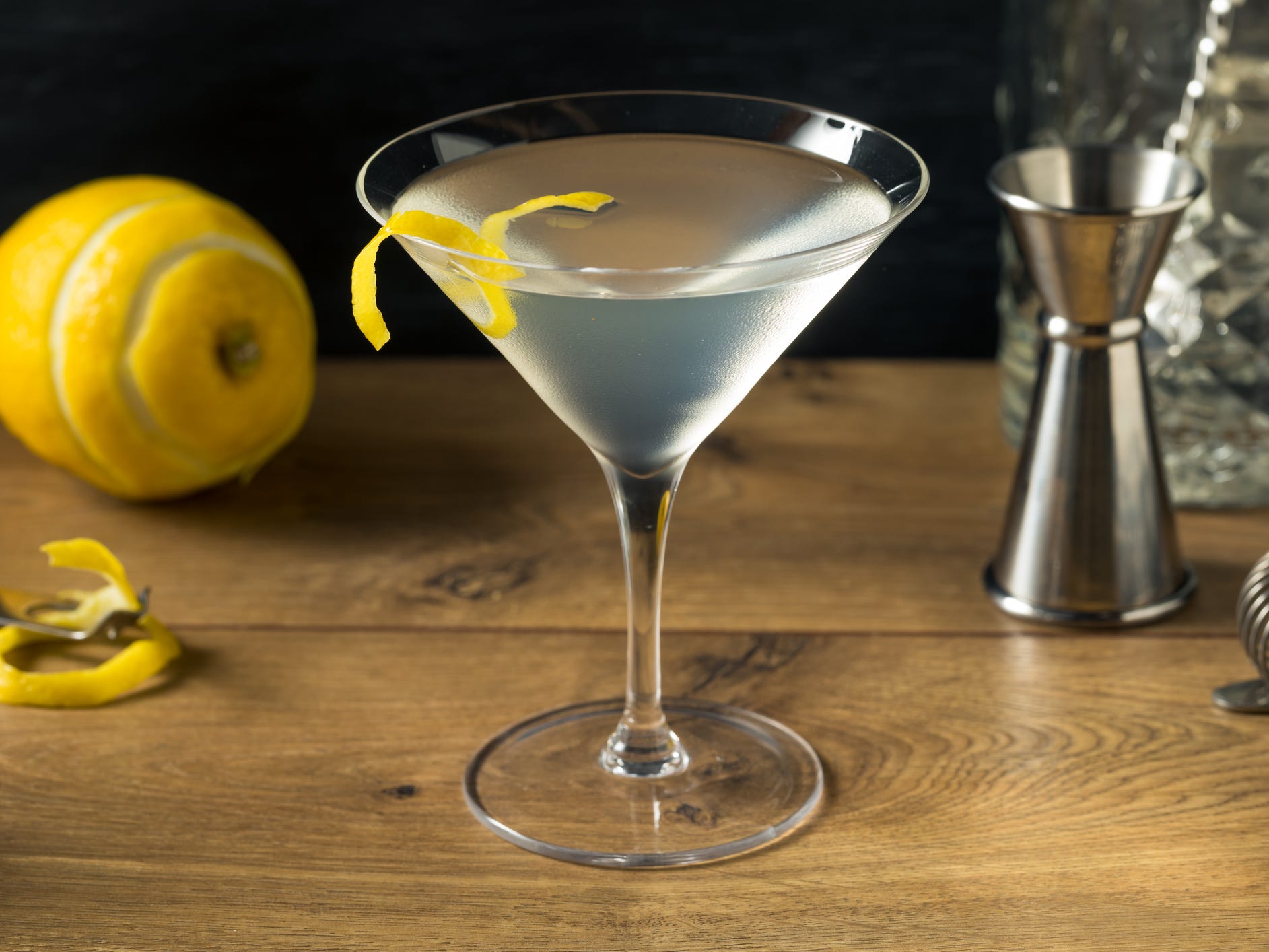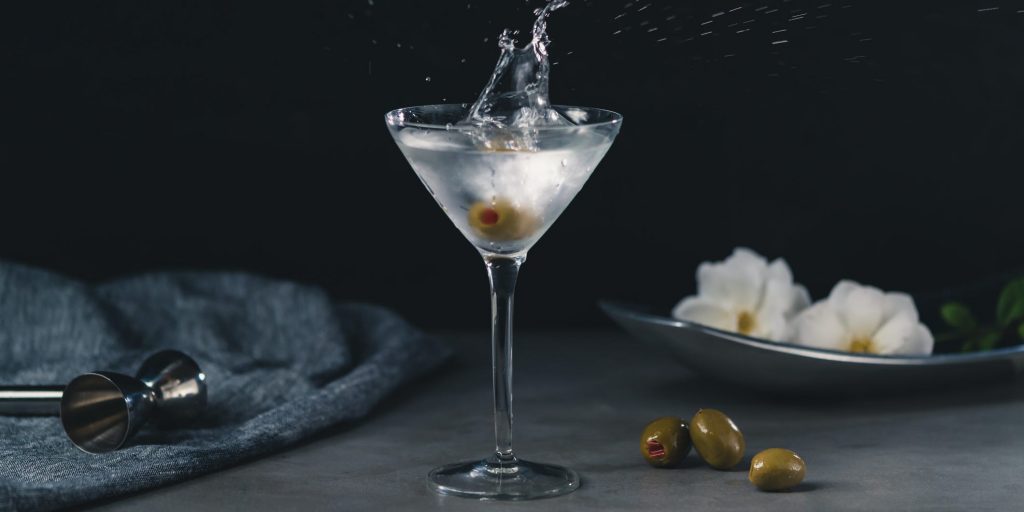
Travis White / EyeEm/Getty Images
- A classic martini is made using gin as the base but vodka is also popular.
- Stirring a martini makes a stronger drink while shaking makes a colder cocktail.
- A dry martini contains less vermouth, wet contains more, and a dirty martini contains olive juice.
- Visit Insider's Home & Kitchen Reference library for more stories.
The martini is instantly recognizable as a classic cocktail sophisticated enough for James Bond. But who invented the iconic drink?
Some claim it started out as a Martinez in the mid to late 1800s, a sweet cocktail that evolved from the Manhattan. Others suggest it evolved from the Marguerite (named for a brand of vermouth), while some believe it was named for the vermouth brand Martini & Rossi.
While the inventor and origin story may be lost to drunk history, the evolution is clear. The martini started sweeter – sometimes using ingredients like sweet vermouth, curacao, and bitters, along with a higher ratio of vermouth to gin.
Over time it became much drier, dropping most of the extra ingredients and swapping to dry vermouth. The clean, crisp drink may have hit its peak in the 1950s and 60s – the martini lunch era – but it is still popular in bars and steakhouses the world over.
While a martini is simple in its composition, it can be a tricky cocktail to get right. "As the history and evolution of this drink has shown us, there really isn't a wrong or right way to enjoy a martini," explains Kaleena Goldsworthy. A longtime mixologist and owner and founder of the cocktail company The Bitter Bottle, she's made countless martinis and has plenty of tips and tricks for creating your ideal drink.
Gin or vodka?

Lara Hata/Getty Images
While gin is historically the standard choice in a martini, vodka can be used instead in equal amount. "A good martini is one you love - so if you're a gin fan, a gin martini is the best! If you're a vodka fan, same here," says Goldsworthy. "I feel like they both have their place and both bring different elements to the drink."
Gin tends to make a more refreshing martini, adding some herbal and citrus elements from the base spirit. "You want a solid gin that has a flavor profile that excites you. If you're having a dry martini, you want a gin that stands alone with prominent flavors you enjoy," says Goldsworthy.
"Vodka tends to take on the flavors it is incorporated with more seamlessly," notes Goldsworthy. While the spirit is more neutral, yielding a more savory martini, she notes that a well-crafted vodka can have beautiful nuances. "When you're choosing vodka for a martini, choose one that is good to begin with. This is not the time to cut corners."
Variations on the classic (and how to order them)

bhofack2/Getty Images
While Goldsworthy's recipe makes an excellent dry martini, she's the first to admit there are plenty of variations. "There may be a 'classic' way to enjoy it, but it's changed so much through the years that the right martini is the guest's choice," she explains. Use these descriptors when ordering your next martini to ensure you get the ideal cocktail.
Dry: It's slightly confusing, but dry martinis contain less dry vermouth. Extra-dry means there's only a couple of drops added, making a spirit-forward martini that really lets the gin or vodka shine.
Wet: Wet martinis contain more dry vermouth and therefore tend to be slightly sweeter with more flavor characteristics from the vermouth. "My favorite variation is a 50/50 martini with gin and a lemon twist. On a hot summer's day, I love it shaken with a dash of bitters," says Goldsworthy.
Dirty: Instead of reserving the olives for garnish, a dirty martini adds olive juice to the mix. To avoid adding too much or too little juice, Goldsworthy recommends giving the mixture a whiff while it's still in the mixing vessel. "If you can smell both the olive juice and the spirit, you've probably got a good ratio."
With a twist: There are a few popular garnish options for martinis, the most commonly used being an olive or two. To highlight the citrus aromas and flavors in the drink and make it less savory, swap the olive for a twist of lemon peel.
Shaken or stirred?
While this issue is constantly debated, whether you enjoy a shaken or stirred martini is ultimately personal preference. Purists often turn their nose up to shaking martinis (sorry, Bond) since it dilutes the drink more, but Goldsworthy alternates between the two depending on the spirit and her mood.
"If you're looking for something that has a little less 'teeth' (a bit less intense with the spirit), shaken is best," she says. "If you're thoroughly enjoying the spirit choice and the type of martini, a stirred version is the way to go."
Insider's takeaway
Martinis are a classic cocktail for a reason: the simple mixture allows for plenty of customization to suit your tastes. Whether you prefer it with gin or vodka, shaken or stirred, dry or wet - there's no wrong way to enjoy a martini.
